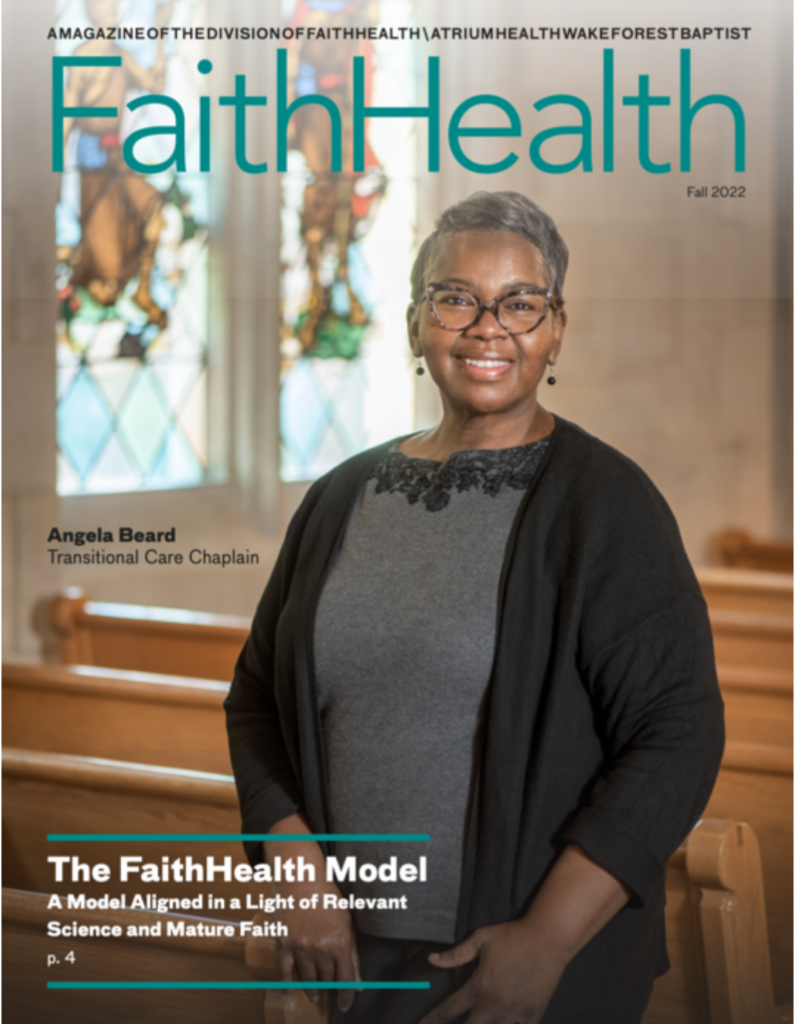Through community investing, health systems provide investments to nonprofits working to improve health and quality of life.
By Tom Peterson
In the late 1980s, the crack cocaine epidemic was hitting its height in the southeast part of Stockton, California. At the intersection of Airport Way and East 8th Street, there would be 50 or 60 people dealing crack cocaine, says Fred Sheil, executive director of STAND. “People learned to not even stop at the red light because it was too dangerous.” Partly because they were outgunned, the police would show up only when there was a body to pick up, he says.
 Taking a STAND
Taking a STAND
Neighborhood residents, mostly people of color, waited for years for the city to do something, and the city never did. So, they organized and formed Stocktonians Taking Action to Neutralize Drugs (STAND). Around 150 members got together and started going to the city council, the school district board and the newspaper to point out what was happening.
The chief of police began working with STAND to start community policing, and within five years they were able to reduce crime by 80%, according to the organization. This partnership between residents and the city was so successful they won national awards. Around that time, STAND began buying and rehabilitating foreclosure properties and houses drug dealers were kicked out of. And they never stopped.
Neighborhood healing happens slowly, says Sheil, so you may not notice. “But year by year, you just see crime going down, you see kids doing better in school. All those indicators of wealth and health are slowly, gradually going up instead of down. Cost to the city and the county in terms of welfare and everything else is going down.”
 Help from the Retirement Fund
Help from the Retirement Fund
As STAND began to rehab more properties, it struggled to find lines of credit for buying properties and financing the rehab work. “Local banks didn’t want to work with us for the same reasons the city didn’t want to work with us,” says Sheil. “Everybody says they want to, but they don’t understand these low-income minority neighborhoods.” Enter Sister Judy Rimbey and the congregations of women who co-sponsored Dignity Health and founded many of its hospitals. Rimbey had managed Dignity Health’s community benefit work and its community investment program. They offered STAND a couple-hundred-thousand-dollar line of credit from their own retirement fund to develop three or four properties at a time.
 When the 2009 real estate crisis hit, Stockton was ground zero. Homes were either being foreclosed or people were just abandoning their property. Dignity Health provided STAND with a million-dollar line of credit for them to buy every piece of property they could get — at five cents on the dollar — to resell to a low-income family at a very reasonable rate so the families could own their property, says Pablo Bravo, system vice president of community health for CommonSpirit Health and Dignity Health. And for those families who could not afford the mortgage, STAND would lease the properties back as rentals and help the families prepare for possibly buying them back when their circumstances improved. “This helped stabilize neighborhood after neighborhood,” says Bravo, “because they could keep the families in their properties by refinancing them at a lower level. If they were buying a house that the family bought for $100,000 and STAND bought it for $30,000, then the family could basically remortgage the house into a $30,000 loan.”
When the 2009 real estate crisis hit, Stockton was ground zero. Homes were either being foreclosed or people were just abandoning their property. Dignity Health provided STAND with a million-dollar line of credit for them to buy every piece of property they could get — at five cents on the dollar — to resell to a low-income family at a very reasonable rate so the families could own their property, says Pablo Bravo, system vice president of community health for CommonSpirit Health and Dignity Health. And for those families who could not afford the mortgage, STAND would lease the properties back as rentals and help the families prepare for possibly buying them back when their circumstances improved. “This helped stabilize neighborhood after neighborhood,” says Bravo, “because they could keep the families in their properties by refinancing them at a lower level. If they were buying a house that the family bought for $100,000 and STAND bought it for $30,000, then the family could basically remortgage the house into a $30,000 loan.”
In 2019, when Dignity Health and Catholic Health Initiatives formed CommonSpirit Health, they both already had community investment programs that provide access to capital in low-income communities. “If you look at all the Catholic-rooted health systems that were started by Catholic Women Religious, they all have a community investment program,” says Bravo. CommonSpirit’s program now has an allocation of around $400 million, of which close to $200 million has already been deployed to support efforts of groups like STAND. And CommonSpirit’s involvement often attracts other investors.
 Today, STAND keeps three general contractors and their subcontractors going on a regular basis. When you turn some of the most blighted properties into nice homes for families you’re going to improve the neighborhood. But when you do it, as STAND has, with 350 properties, you impact an entire community.
Today, STAND keeps three general contractors and their subcontractors going on a regular basis. When you turn some of the most blighted properties into nice homes for families you’re going to improve the neighborhood. But when you do it, as STAND has, with 350 properties, you impact an entire community.
What is Community Investing?
These investing programs provide below-market interest rate loans and other investments to nonprofit organizations that are improving health and the quality of life in their communities. “There’s a trust factor there and historical engagement,” says Bravo. And they get to know new borrowers pretty well before any application is ever submitted. As a result, since conception, the loan default rate of the Dignity Health program is less than 1%, says Bravo.
STAND recently received a $1.8 million Homeless Health Initiative grant from Dignity Health to provide permanent supportive housing for those most in need. “Through this collaboration between multiple partners, we are able to address both the social support and housing needs in our community, through this sustainable model,” said Don Wiley, president and chief executive officer of St. Joseph’s Medical Center in Stockton.
But it’s not all about housing. While 40% of CommonSpirit’s portfolio is in housing, it also funds arts and education, clinics, business and job creation, environmental programs, and food production and distribution. For example, it invests in California FarmLink, a group that provides low-interest loans not only for the production of food but also the stabilizing of minority farm owners and capital for equipment and other things that they would not have access to otherwise.
 Why isn’t every health care system doing community investing? “I wish I could tell you,” says Bravo. “You have to have a pocket of unrestricted funds that you’re not going to use any time soon.” These unrestricted funds are usually used to replace equipment, provide cash flow, make repairs or grow the business. Bravo was part of a group that in 2017 established the Healthcare Anchor Network to help health care systems across the country improve their communities “by leveraging all their assets, including hiring, purchasing and investment for equitable, local economic impact.” Around 50 health care systems have already joined the network, so watch this space!
Why isn’t every health care system doing community investing? “I wish I could tell you,” says Bravo. “You have to have a pocket of unrestricted funds that you’re not going to use any time soon.” These unrestricted funds are usually used to replace equipment, provide cash flow, make repairs or grow the business. Bravo was part of a group that in 2017 established the Healthcare Anchor Network to help health care systems across the country improve their communities “by leveraging all their assets, including hiring, purchasing and investment for equitable, local economic impact.” Around 50 health care systems have already joined the network, so watch this space!
Here’s a toolkit for health systems from Healthcare Anchor Network on Place-based Investing:

